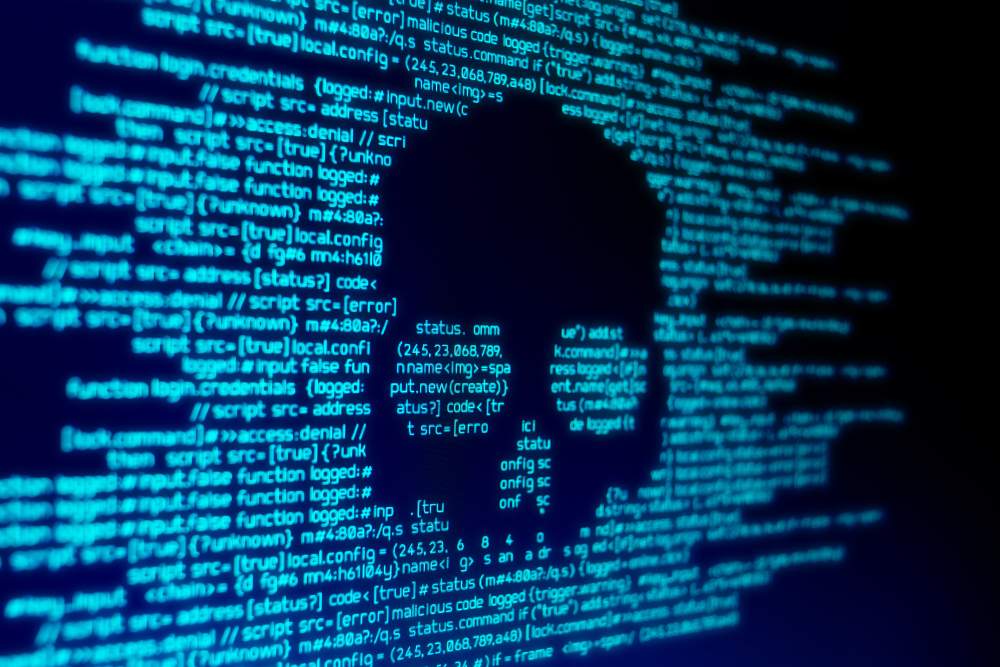What is malware and how can you prevent it?
Read our guide to find out what malware is, why it exists, different types and how to prevent it to keep your organization safe.
Read our guide to find out what malware is, why it exists, different types and how to prevent it to keep your organization safe.

Malware, short for malicious software, poses a significant risk to individuals, businesses, and even entire nations. With an innocent click on an infected email attachment, an erroneous download, or a visit to a risky website, the security of your entire network can be compromised.
Therefore, maintaining vigilance is not just recommended, but absolutely crucial in today’s digital landscape.
But what exactly is malware and how can it be prevented? In this blog, we’ll cover all the information you need, including:
Malware refers to any software or program specifically designed to cause harm, exploit vulnerabilities, or gain unauthorized access to computer systems, networks, or devices. It encompasses a wide range of malicious programs, each with its own objectives and methods of operation, such as viruses, worms, trojans, and more.
This type of software can be distributed through various means, including infected email attachments, malicious websites, compromised software downloads, or even social engineering techniques.
Once it infiltrates a system, malware can carry out a range of harmful activities, like stealing sensitive information, hijacking computing resources, disrupting system functionality, or facilitating unauthorized access to systems or networks.
Malware has a rich history that begins with the self-replicating experiment known as the “Creeper” program in the 1970s. Alongside the proliferation of personal computers and the Internet, malware incidents became more widespread in the 1990s.
The early 2000s saw a surge in destructive worms and blended threats whereas the mid-2000s witnessed the emergence of financially motivated malware, like banking Trojans. Mobile malware targeting smartphones also began to emerge, and nation-state-sponsored attacks employing sophisticated malware made headlines.
Today, malware continues to evolve with techniques like polymorphism and fileless attacks taking place. Malware-as-a-Service (MaaS) can even be bought on the dark web, allowing those without technical skills to launch a campaign.
Malware can work by exploiting vulnerabilities in computer systems, networks, or devices to carry out malicious activities. Malware can also use commonly used applications, APIs, functions and communication channels in order to blend in with ‘normal’ traffic and behavior.
Here is a general overview of how malware operates and spreads:
Overall, malware is used with malicious intent. More specifically, it can be employed for a wide range of reasons, such as:
There’s a lot of money to be made with malware. Some common ways include:
Malware enables cybercriminals to steal sensitive information, trade secrets, or intellectual property. They can then sell the stolen data on the dark web and exploit it for personal gain or competitive advantage.
Malware creates botnets (compromised computer networks controlled by criminals) which can be used to launch DDoS attacks. This overwhelms targeted websites or networks with excessive traffic and criminals demand payment to stop the attack.
State-sponsored actors and intelligence agencies use advanced malware to conduct espionage operations, targeting governments, organizations, or individuals.
To distribute malware, cybercriminals utilize various techniques:
Malware is more than a pesky problem, it’s a pervasive and ever-evolving threat that demands constant vigilance. It causes potentially devastating consequences, such as:
From small-scale nuisances to sizable threats, malware appears in many sizes, formats, and types of severity. Here’s a brief overview:
These attach themselves to legitimate files or programs and replicate themselves when the infected file is executed. They can spread throughout a system or network, corrupting or deleting files, and potentially rendering the system inoperable.
These are self-contained programs that spread independently, often through network connections or email attachments. They exploit security vulnerabilities to propagate rapidly, consuming network resources and causing disruptions.
These disguise themselves as legitimate software to deceive users into installing or executing them. Once activated, they can provide unauthorized access to the attacker, steal sensitive information, or download additional malware onto the system.
This encrypts files on a victim’s system, rendering them inaccessible until a ransom is paid. It can spread through malicious email attachments, compromised websites, or exploit kits.
This silently monitors user activities and collects information without the user’s consent. It can track keystrokes, capture passwords, record browsing habits, or gather personal data.
This displays unwanted and intrusive advertisements on a user’s device. While not inherently malicious, it can negatively impact system performance, compromise user privacy, and potentially lead to further malware infections.
These are networks of infected computers, often controlled remotely by a bad actor. These compromised machines, known as “bots,” can be used for various purposes, such as launching DDoS attacks, sending spam emails, or conducting large-scale cybercrimes.
This is malicious software that tricks users into believing their devices are at risk by presenting false security alerts. It uses fear tactics to coerce victims into purchasing unnecessary or fake security products or services.
One real-life example of malware is the WannaCry ransomware, which emerged in May 2017 and caused widespread disruption globally. WannaCry targeted computers running the Microsoft Windows operating system, exploiting a vulnerability in the Server Message Block (SMB) protocol.
Once a system was infected, the malware encrypted files and demanded a ransom in Bitcoin for their release. WannaCry quickly spread across networks, affecting thousands of organizations, including hospitals, businesses, and government institutions, causing significant financial losses and operational disruptions.
Malware has the potential to affect a wide range of devices across various platforms, however, the level of vulnerability and types of attack may vary. The types of devices include:
Detecting an infection can be challenging as malicious software often tries to operate covertly. However, there are several signs to look out for:
In some cases, however, it’s not always this simple. With rootkits, for example, it’s recommended to mount the different drives whilst booted into another system, such a live-USB distribution and inspect it from there rather than from the infected system itself. This is because the malware might attempt to hide its presence at runtime.
It’s also good to know what a ‘healthy’ system looks like, such as what processes or services are expected to run and what they are for. This way you can spot unexpected processes easier.
Think you’ve already been infected? Follow these steps:
Prevention is the most effective strategy for mitigating the impact of malware attacks and protecting the integrity of your security system. The optimal prevention strategy is a holistic and comprehensive approach that encompasses measures like:
The threat of malware is undebatable and alarming. As the name suggests, malicious software can wreak havoc on computer systems and networks, causing irreparable harm and disruption.
What makes malware particularly insidious is its pervasive nature and constant evolution. It adapts to new technologies and preys on the weakness of your cybersecurity stance.
Organizations can protect themselves from this threat by staying informed and implementing robust security measures. However, they can further reinforce their security posture by enlisting the help of professionals, like CovertSwarm.
CovertSwarm is a relentless and constant cybersecurity firm that helps organizations map out their attack surface. Our service works in line with your Security Operations Center (SOC) and helps protect against the threat of malware and bad actors.
To find out more about our Swarm, what we do and how we can help your business, get in touch today.

What is ransomware and how do you prevent it?
Read about what ransomware is and shield your business from ransomware attacks with our guide. Plus, discover best practices for detection, prevention and recovery.

What is phishing and how can you prevent it?
Read our complete guide to learn what phishing is, different types of attack, how it works and how to prevent it

What is social engineering in cybersecurity?
Discover the ins and outs of social engineering attacks and learn how to identify and prevent them with this comprehensive guide from CovertSwarm.